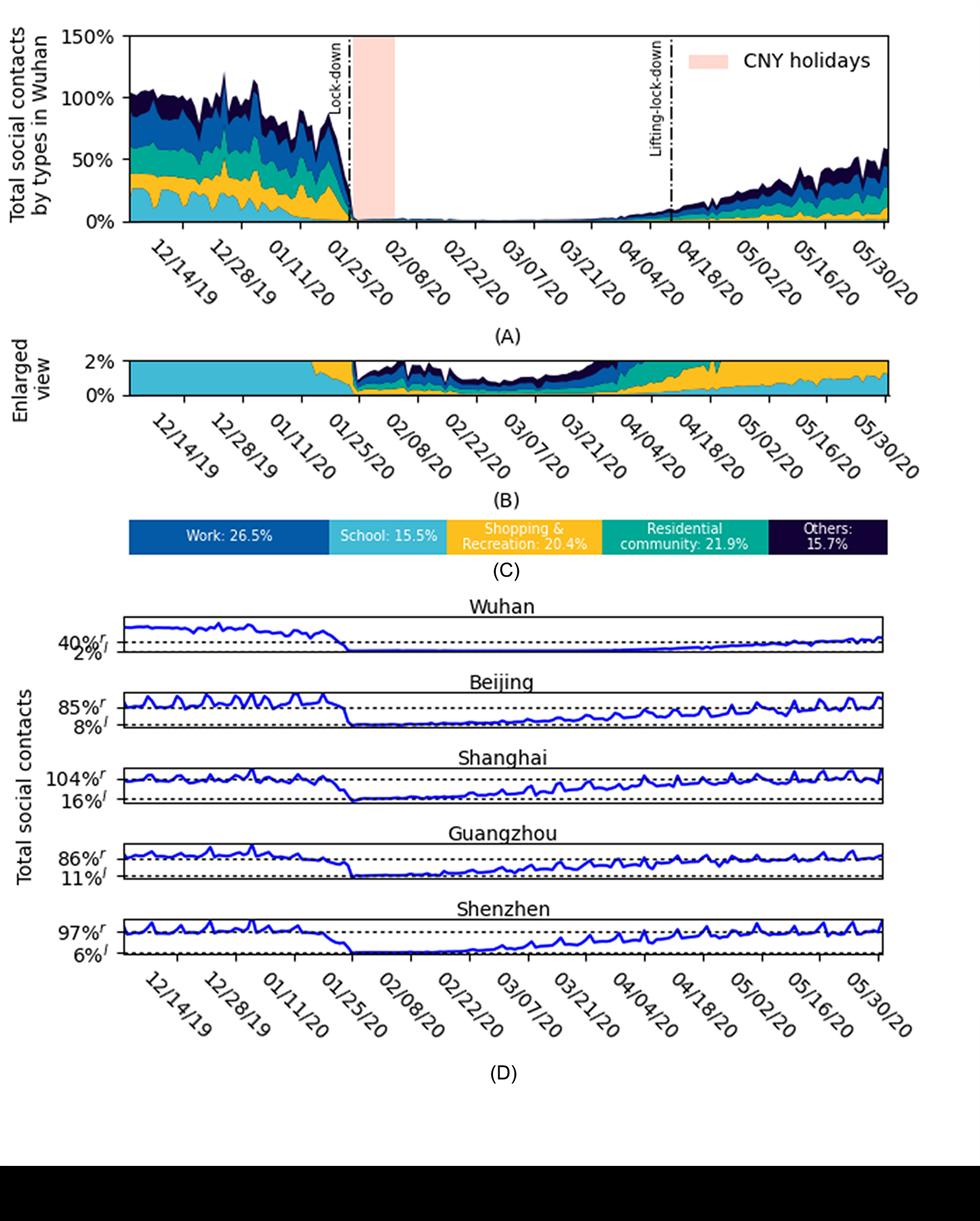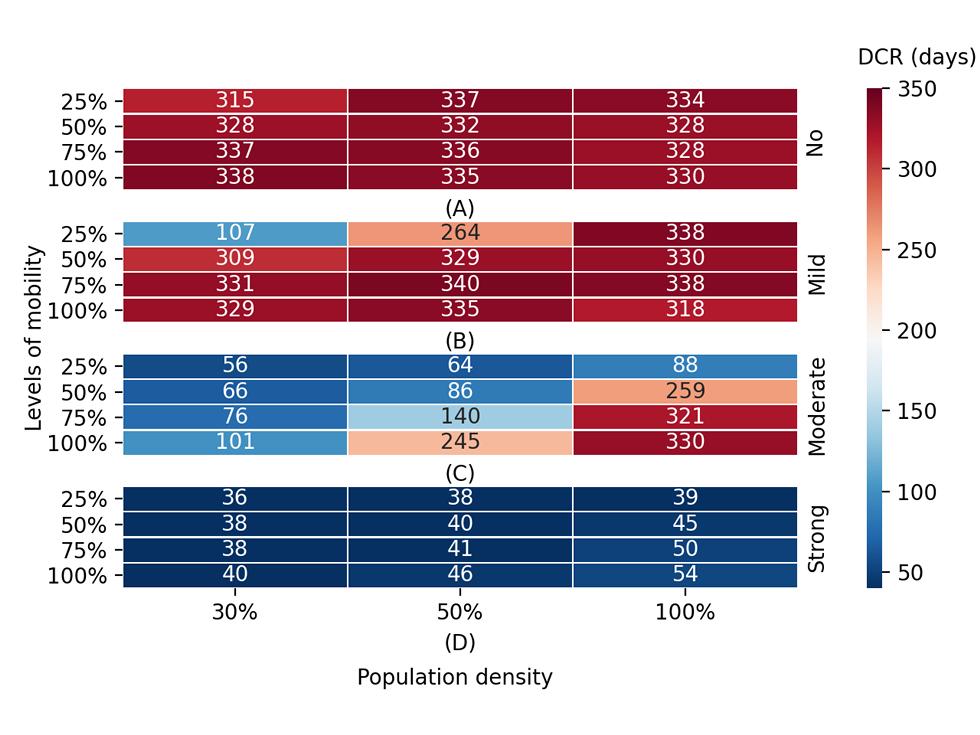Combined vaccination and physical distancing enough to prevent future COVID-19 surges

A combination of robust vaccination programmes and strict physical distancing rules could avoid recurring peaks of COVID-19 without the need to rely on stay-at-home restrictions, according to a new study by epidemiologists and demographers from WorldPop at the University of Southampton, in collaboration with The Chinese University of Hong Kong.
This research used anonymised mobile phone geolocation data with epidemiological and coronavirus case data from China to model the potential impact of vaccination and physical distancing on virus transmission. They predicted the effect of different combinations of interventions on low, medium and high density cities in the country.
The impact of physical distancing in containing future resurgences of COVID-19 depends greatly on the intensity of measures, population density, and the availability of vaccines across geographical areas and time. The researchers set out to gain a greater understanding of the relationship between these factors.
The findings are published in the journal Nature Human Behaviour.
The team predicts that in most cities, vaccination programmes and physical distancing combined will be enough to contain virus resurgence without the need to greatly restrict population mobility. Containment in this study was defined as maintaining a low transmission rate, or ‘R’ below one.
The researchers report cities with medium and high density populations will need both vaccination and distancing to prevent future intense waves of COVID-19, until herd immunity is reached. However, they suggest cities with low populations and effective vaccination could fully interrupt transmission without the need for physical distancing. In all cities, full ‘stay-at-home’ lockdowns would no longer be necessary.
The team’s results also suggest strong physical distancing interventions implemented for short periods of time may be more effective than mild, longer term ones.
The author and spatial epidemiologist, Dr Shengjie Lai, Senior Research Fellow in Geography and Environmental Sciences at the University of Southampton comments: “Our research provides a framework and set of outputs that can be used by policy-makers and public health authorities to identify appropriate levels of intervention to keep COVID-19 outbreaks in check over time. Although our study was based on data from China, our methods and findings are applicable to cities worldwide with similar levels of population density and social contact patterns.”
Director of WorldPop, Professor Andy Tatem, added: “Previous studies have assumed that when people reduce mobility, they proportionately reduce their social contacts, but this isn’t necessarily the case and as more SARS-CoV-2 vaccines come online, there is an urgent need to understand the relationship between these factors, so we can adjust and tailor interventions and open up sections of society in a safer way.”
The researchers recognise some limitations to their study, for example, the absence of data on the contribution of handwashing and face masks and challenges of vaccine supply, but emphasise that their approach can be quickly adapted to provide near real-time data to address emerging, time critical needs.
The paper Integrated vaccination and physical distancing interventions to prevent future COVID-19 waves in Chinese cities is published in Nature Human Behaviour.
Ends
Figure 1 (below) - Change in total social contacts index (TSCI) in Wuhan in China. (A) Change of TSCI in Wuhan from December 2019 through May 2020 in the form of a percentage of the average pre-lockdown level in December 2019 (100%). (B) The enlarged view of (A) on the part of TSCI between 0% and 2%. (C) The proportions of TSCI that occurred in different coloured categories of places in December 2019. Different colours in (A) and (B) represent the same as those in (C). The two vertical lines in (A) denoting the lockdown and lockdown-lifting dates are only applicable to Wuhan as other cities announced the two dates differently.
Figure 4 (below) - Estimated effects of control measures on containing a resurgence of infections under different population densities. (A)-(D) show for four intensities of physical distancing (i.e., none, mild, moderate, and strong), respectively, the median duration required to contain a resurgence (DCR, unit: days) in Wuhan with four levels of pre-lockdown mobility (25%, 50%, 75%, and 100%) under different population densities. The value in each cell denotes the DCR with respect to its associated level of mobility, intensity of physical distancing, and population density. The population densities are 30%, 50%, and 100%, respectively, of that in Wuhan pre-lockdown.



